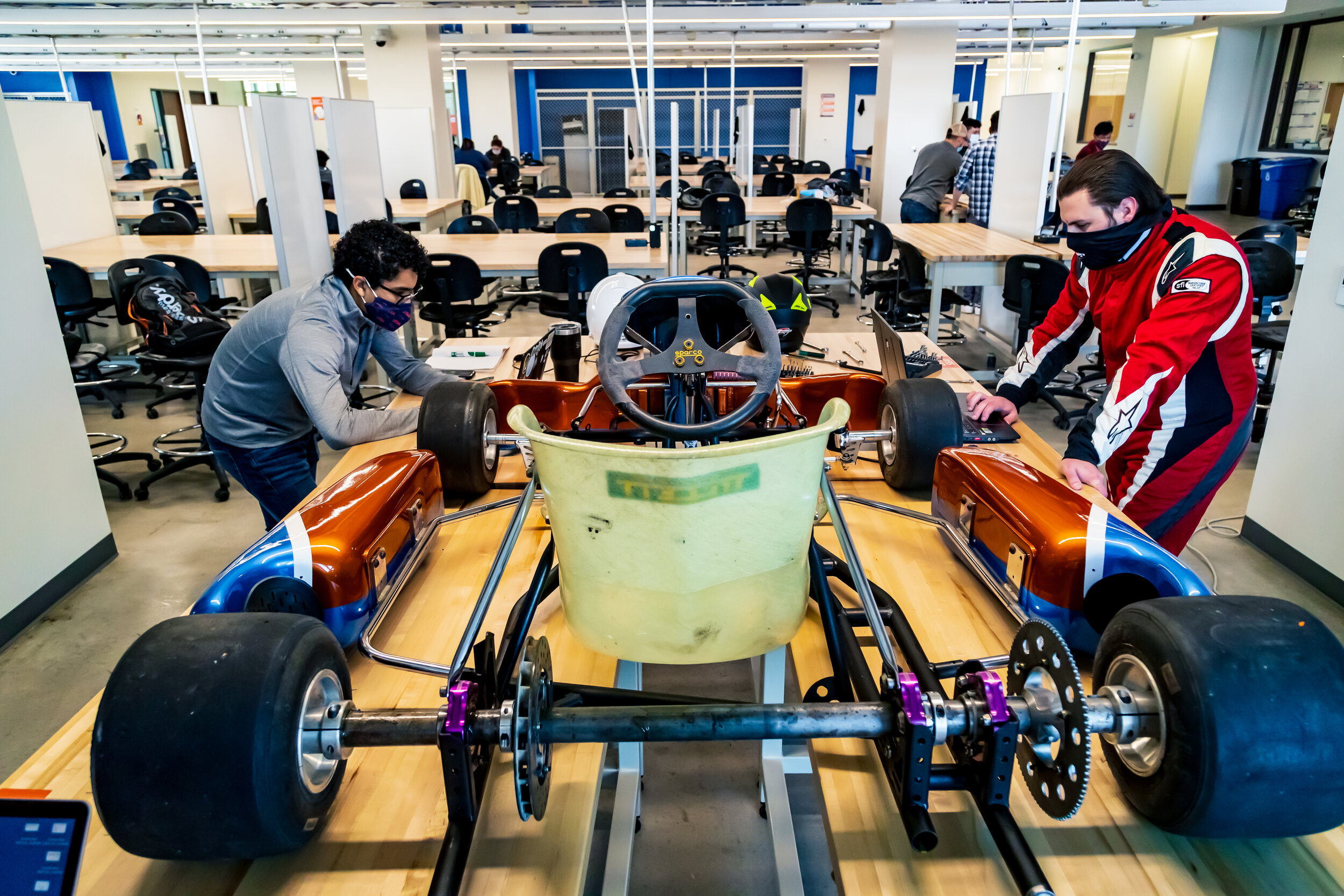Basic transportation, EV style
The founders of the first ever campus-based Electric Auto Association chapter start out with go-karts
Members of the new University of Texas San Antonio EAA chapter ready for go-kart competition.
Javier Sainz became adept at riding go-karts when he was 8 years old. That was back in 2004, when his father taught him how to ride his 1980’s-vintage gas-powered version. Javier had an immediate affinity with this dad’s ride, and it wasn’t long before he was zigzagging down the roads of his hometown of Tampico, Mexico.
The elder Sainz sold the go-kart when Javier was 14, a few years before he moved his family to McAllen, Texas to open a Johnny Rockets franchise. Two years later, the family moved to San Antonio to open a second Johnny Rockets. There, Javier enrolled at the University of Texas San Antonio (UTSA) as a freshman committed to earning a mechanical engineering degree.
It was while a sophomore at UTSA that Javier received an invitation from a friend at Purdue University in Indiana to compete in the evGrand Prix, an electric go-kart race for high school and collegiate teams.
“That’s when I finally got back into the go-kart world,” Javier said, his English flawless due to the fact that he attended the American School of Tampico.
Sainz joined fellow engineering students Nicholas Vignaud and Eric Pava to enter the competition, the three young men impressed that scoring would be based on the uniqueness of the electric vehicle (EV) system design, the efficiency of energy consumption, as well as the individual team’s involvement in community outreach.
Meant to be
As part of the outreach pillar of the competition, Javier, turned to the Electric Auto Association (EAA).
“The EAA kept coming up when I was researching EVs, so I finally reached out,” he said. “I think they were eager to hear from us because they want to get more young people involved in order to expand the vision and the mission of the organization.”
Javier Sainz puts his mechanical engineering skills to work on the go-kart
“We’ve felt very at home with the EAA. It’s a perfect match,” Sainz continued, eager to thank both EAA Vice-President Elaine Borseth and Austin EAA Chapter President Aaron Choate for helping to lead the way. “We wanted to be part of an organization that shares the same ideas as we do about electric transportation.”
The resulting UTSA EAA chapter is dedicated to promoting EV technology, as well as paving the opportunity for future EAA collegiate chapters. Three UTSA faculty advisors have come on board, one professor each from the Electrical Engineering, Biomedical Engineering, and Mechanical Engineering Departments.
“They’re super excited to help out,” Sainz, now a UTSA senior, said of the faculty advisors.“They’re great mentors regarding any decisions we’re making.”
Committed engineering students
“The main goal of our organization is to educate others on the benefits of EV technology with respect to economics, performance, and the environment,” Javier explained. “As engineers committed to upholding the Engineering Code of Ethics, we are motivated to find a solution to the environmental crisis caused by transportation emissions from internal combustion engines (ICE), something the transportation industry has historically neglected.”
“Right now, we’re focused on the design and the implementation of new ideas into our go-kart,” Sainz continued. “Because sustainability is at the heart of our new organization,we are reusing and up-cycling as many parts as possible from standard ICE go-karts. We also hope to provide renewably sourced power to recharge. We’re thinking of building a mobile photovoltaic array to place trackside for charging between races.”
Sainz is hopeful that the chapter can begin holding in-person meetings when the next semester begins in August.
“We want to encourage EVs among folks our age and right now is a great opportunity,” he said, explaining that he hopes to influence high school students as well: “Think about it… It takes 4 years to graduate high school, and another four years to graduate college. By 2029, we’ll be getting close to all electric. We’re at a perfect time to start boosting people into that field.”
Sainz has quite a lot on his plate these days. In addition to his engineering studies, working on the go-Kart for the evGrand Prix, and launching an EAA chapter, he recently helped his parents open their third Johnny Rockets, this one in San Marcos, Texas. For the Sainz family from Tampico, there are success stories all around.



